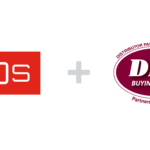You’re probably getting the message that you need more and better content on your website, social media channels and other mediums at your disposal.
Whether you’re hearing it from your marketing team, reading it in industry reports or feeling it in your bottom line, you’re aware that your customers want more information from you – without always having to speak with your sales reps or visit your branch.
At the same time, you’re wondering: Is digital content really worth it? What would the return on investment be? Can’t I get by with what I have and just ramp up sales efforts with more reps and ad spend?
Unfortunately, this is a message you can’t ignore. The statistics don’t only confirm that customers want more digital content from you today, but they also reflect B2B buyers’ increasing reliance on content for decision-making.
- 75% of B2B buyers prefer self-service experiences with no rep involved. (Gartner)
- 71% of B2B buyers surveyed downloaded and consumed multiple assets to help with the decision-making process. (DemandGen 2023 B2B Buyer Content Preferences Survey)
- 46% of B2B buyers surveyed report increasing the amount of content they consumed over the prior 12 months. (DemandGen 2023 B2B Buyer Content Preferences Survey)
With these stats in mind, a better question might be:
What is the cost if you don’t meet customers’ increasing demand for digital resources?
Will they go where they can find more resources on their own? Will they reject you after one glance at your website? Will you even show up on prospects’ radar?
It’s clear: Distributors need to provide the right digital resources for their customers. It’s a matter of setting realistic goals and expectations for return on investment (ROI) and making strategic decisions about the content you create to maximize its value.
You can’t expect to make many direct and immediate correlations between content and leads or purchases. These instances do happen, but they’re not the standard. This doesn’t make content a flawed investment. It’s just different, and it often does so much more than a quick-return investment would. Content is a long game, and the more you put into it, the greater the impact it can have.

Expectations for ROI look less like “5 leads from an ad” and more like meeting the following marketing and business goals:
Grow Share of Wallet with Existing Customers
One classic complaint we hear from distributors is: Our customers don’t know all that we offer. Even if you provide a digital catalog and have most of your products on your site, scrolling through endless products or searching for them one-by-one isn’t always the most productive use of your buyers’ time. If they don’t know you offer something and they know another company does, they’ll probably just get it where they know they can and chug along.
You can strategize to improve cross-selling with your sales team and invest in software that supports those efforts. You can send product-focused emails to customers and post about your offerings on social media. Quality, helpful content around these product categories can also expand customers’ knowledge of your offering.
For instance, you can publish a blog about a relevant topic in the industry that involves a selection of related products you sell. For example, how to select the right tool for a specific need, mentioning and linking those products as they’re relevant, and concluding with a quick note: “We carry a variety of products for (x industry), including (x product type), (x product type) and (x product type). Reach out to discuss your needs or explore more in our catalog.”
You can also create helpful, customer-centric email and social media campaigns to draw attention to the fact that you provide those products and serve those industries.
Improve the Customer Experience Online
Providing a satisfactory customer experience is the crux of doing good business. However, if 75% of your buyers aren’t talking to you, how can you make sure they’re having an optimal experience? You want to make sure your site is user-friendly and easy to navigate, with lightning-fast speeds and a chatbot feature.
You also want to make sure there are plenty of helpful, informative and relevant resources for those who aren’t ready to purchase and are in the research phase. These resources include everything from the copy on your web pages to product descriptions, downloadable resources and case studies about similar companies.
Reach a New Industry Vertical
Are you looking to target a new industry? Such an initiative requires a lot of work on the back end, in terms of operations and training. But it’s also important to get your name out there and earn the trust of that network. To achieve this, you can attend conferences, host lunches and make phone calls.
You can also use content. Building out helpful resources around that target industry on your website is step one.
Another simple and effective way to get in front of a new audience is to publish a helpful article in a relevant industry publication. The point here isn’t to be salesy and parade your offerings in front of them. The point is to demonstrate your expertise and understanding of the pain points, concerns and opportunities related to the industry. Guest articles will be attributed to you (or a relevant expert at your company), typically with a headshot and biography that introduces you to this new target audience.
How to Build a Content Program that Delivers
The examples we’ve covered only scratch the surface of the ROI distributors can expect from their content efforts. Additional examples include:
- Increased brand awareness
- Improved brand reputation
- More engaged prospects
- Increased existing customer engagement
- Strengthened credibility and trust
However, you’re not going to get outstanding results by simply putting words out on the web. Quality is key. After all, you need to reflect the true expertise you hold offline – online.
54% of B2B buyers are overwhelmed by the amount of content available, but the findings show that quality is far too often lacking. (DemandGen 2023 B2B Buyer Content Preferences Survey)
To build a digital content program that truly delivers, heed this advice:
- Make quality a priority.
- Talk to your customers to discover what they actually need from you.
- Start with high-value content and build out from there (think website copy, blog posts, case studies).
- Attach each piece of content to a goal.
- Be helpful first – and minimize the sales talk.
- Don’t hire ChatGPT to do the heavy lifting.
- Put your brand “personality” into the content to differentiate.
- Be consistent – and don’t ease up on the momentum.
Content marketing has one of the most convoluted paths from investment to return. While you wait for results, you may be tempted to give up and allocate your dollars to more tangible, immediate returns.
But as I’ve said, content is a long game. The long-term pay-off can be more valuable than that burst of immediate revenue, especially if you’re consistent and build a meaningful library of resources for your customers.



